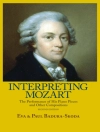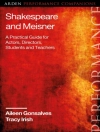One of the most gifted directors of the post New Wave, Maurice Pialat is frequently compared to such legendary filmmakers as Jean Renoir and Robert Bresson. A quintessentially realist filmmaker, who, like Bresson, was also trained as a painter, Pialat’s particular form of realism influenced an entire generation of young filmmakers in the 1990s.
This volume is the first book-length study of Pialat’s cinema in English. It provides an introduction to a complex and difficult director, who saw himself as a marginal and marginalised filmmaker, but whose films are deeply rooted in French society and culture. Pialat was long considered the only major filmmaker to portray ‘la France profonde’, the heart of France – the people who, as he put it, ‘take the subway’. Taken as a whole, Pialat’s work can be seen both as an oblique autobiography and the portrait of a fundamental institution – the family – over several generations.
Table of Content
1. Introduction: Maurice Pialat, the outsider
2. Pialat and La Nouvelle Vague
3. A family of works
4. Family portraits I: Nous ne vieillirons pas ensemble, La Gueule ouverte and Passe ton bac d’abord
5. Family portraits II: Loulou, A nos amours and Police
6. The saint and the artist: men apart
7. Conclusion: paternity and Le Garçu
FILMOGRAPHY
SELECT BIBLIOGRAPHY
About the author
Marja Warehime is Associate Professor of French at the University of South Carolina












